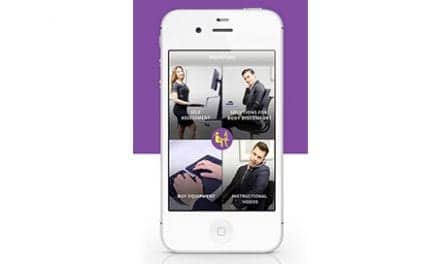PHOTO CAPTION: The work rehabilitation professional must strive to keep job-specific work ability the center of focus when making return-to-work recommendations.
Much has happened in the past year, as healthcare professionals pivoted hard and turned to technology to assist in the delivery of patient care services. All had to push our use of technology to the edge of our knowledge in order to meet needs this past year. This focus on using technology to deliver remote services has likely forever changed how we deliver healthcare, and the subspecialty of work rehabilitation is no exception.
Technology
As technological advances pave the way for new ways to deliver patient-related services everywhere, the future is unwritten and ideas are flowing. Artificial intelligence (AI) is leading out. AI will also become a significant tool that allows employers, employees and work rehabilitation specialists to work together in ways we would not have thought possible. The human resources profession is adopting variations of AI to use in hiring and retention. Post offer of employment testing services as provided by work rehab (WR) professionals is not likely to be far behind.
Jobs can be viewed remotely through a camera lens, and parties can communicate instantaneously. The parameters of jobs such as heights, distances and forces can be measured through algorithms in order to provide ergonomic recommendations and provide a basis for test design for hiring and return to work. A worker’s movement and strength can be measured by applying wireless sensors, and some measurements don’t even require sensors to be applied. The speed at which this technology is evolving will have us all working hard to keep on top of what is at our disposal to provide services that reduce injury and improve hiring and return-to-work outcomes.
[sidebar float=”right” width=”250″]Product Resources
The following companies offer products and services that can be helpful for workplace ergonomics, industrial rehabilitation, and work injury assessment:
DSI Work Solutions Inc
www.dsiworksolutions.com
ErgoScience
www.ergoscience.com
JTECH Medical
www.jtechmedical.com
KEY Functional Assessments Network
www.keymethod.com
OPTP
www.optp.com
WorkWell Prevention & Care
www.workwell.com[/sidebar]
Legal Implications
As this era of rapid technological change progresses, the work rehabilitation professional must strive to keep job-specific work ability the center of focus when making recommendations on return to work and work ability. For example, the impact of the COVID-19 pandemic pushed human resources professionals to accelerate using remote services and AI to manage hiring and other employment services; already many HR professionals face mounting legal challenges related to bias and discrimination. The laws protecting workers’ rights have teeth, and there are plenty of law firms willing to defend them. Therefore, any employer services that the WR professional provides must employ methods that assure accuracy to the job and are able to prove that such tests and measures are job-related, consistent with business necessity.
Proving that such services meet the criteria of validity is critical. The Uniform Guidelines on Employment Selection Procedures (UGESP) identifies three types of validity (and combinations thereof) that are recognized as acceptable to prove that testing is justified by business necessity and therefore not biased or discriminatory. Included are: content, construct and criterion validity. The type of validity uses may prove to be quite important. Job-relatedness needs to be effectively communicated in a way that can be understood, and agreed upon, particularly by workers, to avoid litigation.
It is often misunderstanding that leads to costly lawsuits and deteriorated relationships between labor and management teams. Content validity is an effective approach as far as communication is concerned. Misunderstandings, as well is known, is very often the cause of litigation.
Call to Action
As rehabilitation professionals, it is our responsibility to help our working patients sustain gainful employment—ideally, in the job they occupied at the time of injury or illness but when that is not possible, a job for which they have the skill and functional capacity to perform. The rehabilitation professional is ideally suited to assessing work ability and assisting with temporary or permanent modification when necessary. We should not lose our focus as those who would benefit from the worker’s lack of perceived cooperation would have us do.
Just as we are able to gain the trust of our patients in order to assist them in recovery, we should strive to gain the trust of employers, physicians, case managers, and indeed all who are stakeholders in the efforts to maintain or return workers to their jobs. This can be accomplished by providing facts, data, and information about jobs in a format that is straightforward and in a language that is easily understood, that is indeed transparent.

Was it Valid?
By its very nature, interfacing with employers and employees and jobs on any level has legal implications. The laws that protect the rights of workers are a force to be acknowledged and understood. The laws that outline the employee’s right to work and their right to not be discriminated against are brought to the courts routinely. Often when a worker’s right to work or right to disability benefits is challenged, the subject of job-relatedness surfaces, and whether the process to determine the decision was a “valid” one.
Whether we are assisting with injury-prevention initiatives or return-to-work initiatives, this must be taken seriously. All parties are called to the same standard. If the rights of workers are not upheld, if the process is not valid, if the process is not consistently applied, then the door to discrimination lawsuits swings wide open.
For the work rehabilitation professional, this means gathering accurate information in a way deemed legally valid; being assured of its accuracy and perhaps most importantly, effectively communicating the information to all parties—particularly to the workers and the front line supervisors. One of the greatest shortfalls of injury-prevention and injury-management services occurs when all parties, most notably the workers themselves, fail to understand and agree upon the methods and information used to guide hiring or return-to-work efforts.
Conclusion
Most rehabilitation professionals were drawn to the field of work injury prevention and work injury management to help individuals and their patients get back to work and avoid needless injury or re-injury. As we move forward in the post COVID increasingly technology-driven era, it is critical that the WR professional not lose his/her direction and that all remember that “Big Brother is watching you.” Not to fear, but to make sure that services requested and provided meet the standards that protect workers from discrimination. Technology brings new opportunities but also potentially new threats unless great care is taken to meet validity standards and communicate effectively to all parties. If WR professionals are not convinced that the services being provided meet this burden of proof, then that professional should reconsider the methodology being used. PTP
Virginia “Ginnie” Halling, PT, is chief executive officer of DSI Work Solutions Inc. For more information, contact [email protected].
This article appears in the 2021 February/March Physical Therapy Products titled Technology and Law.
Sources the author consulted for this article include:
https://www.shrm.org/hr-today/news/hr-magazine/summer2020/pages/artificial-intelligence-based-hiring-concerns.aspx. Addressing Artificial Intelligence Based Hiring Concerns
https://www.dol.gov/agencies/ofccp/faqs/employee-selection-procedures. Validation of Employment Selection Procedures
https://www.ncbi.nlm.nih.gov/pmc/articles/PMC1201002. Communication Gaffes: a root cause of malpractice claims





